Get Started for FREE
Sign up with Facebook Sign up with X
I don't have a Facebook or a X account

 Your new post is loading... Your new post is loading...
 Your new post is loading... Your new post is loading...
But many hurdles remain before approach can be tried in people
BigField GEG Tech's insight:
Do old and damaged cells remember what it was like to be young? That’s the suggestion of new study, in which scientists reprogrammed neurons in mouse eyes to make them more resistant to damage and able to regrow after injury—like the cells of younger mice. The study suggests that hallmarks of aging, and possibly the keys to reversing it, lie in the epigenome, the proteins and other compounds that decorate DNA and influence what genes are turned on or off.
According to a study conducted on primates by Intellia Therapeutics, CRISPR/Cas9 would work better than conventional genetic therapy for increasing the activity of factor IX (FIX), the blood clotting protein that is missing in people with hemophilia B. Researchers have shown that CRISPR/Cas9-mediated gene insertion can lead to higher levels of FIX activity over time compared to conventional gene therapy that uses adeno-associated viral vectors (AAVs) to deliver modified genes to cells. According to the company, a six-week study demonstrated a successful increase in FIX activity, at or above normal limits, in the blood of non-human primates. FIX activity levels can be refined by adjusting several parameters, such as CRISPR/Cas9 doses. Also, in a mouse model of liver regeneration, the companies’ scientists demonstrated that unlike conventional gene therapy, CRISPR/Cas9 can allow gene constructs to remain active inside liver cells even as they divide and expand in order to restore the tissue that was lost. The researchers took part of the animals' livers to induce tissue regeneration. After 14 days, the activity levels of the artificial FIX fell by 85% with the gene delivered using standard gene therapy. In contrast, when CRISPR / Cas9 was used, FIX activity levels remained stable for at least 45 days.
BigField GEG Tech's insight:
Using a large animal model of genetic brain disease, researchers led by John H. Wolfe of the School of Veterinary Medicine, Perelman School of Medicine, and Children’s Hospital of Philadelphia delivered an effective treatment across the blood-brain barrier to correct the whole brain.
BigField GEG Tech's insight:
The ANCHOR system invented by NeoVirtech has been combined by GEG Tech to tag HIV-1 vectors (Lenti-ONE system) and generate autofluorescent lentivirus genomes able to be tracked in real time in living cells (1). Following this proof of concept, the collaboration with Francesca Di Nunzio lab at the Pasteur Institute, has resulted a new breakthrough published in Journal of Virology (2): “We are very excited to be able to visualize the pre-integration complex and the fate of the HIV1 genome in living cells. The ANCHORTM technology is for us the state of the art technology allowing for the first time thorough investigation of HIV1 biology and response to antiviral treatment directly in living cells. The technology is the only one compatible with CLEM (correlative light-electron microscopy) to dissect the ultrastructural structure of the HIV1 particle. The fact that the ANCHORTM technology does not modify HIV1 virus biology offers an unprecedented view of the dynamics of this virus in living cells”. Francesca Di Nunzio Ph.D, Pasteur Institute, Paris, France.
A CAR T-cell therapy amplified by RNA technology, developed by BioNTech, has shown preclinical potential for tackling solid tumors, which are hard to treat with current CAR T-cell therapies.
BigField GEG Tech's insight:
A clever strategy which could be very useful to design the next generations of cancer immunotherapy, including for solid tumors . GEG Tech has been one of the first actors to provide solutions for CAR cells generation. By the way, its last generation of RNA delivery system based on lentiviral vectors could highly improve this type of strategy, taking the advantages of the lenti platform without the biosaftey issues.
Data showed at the International Conference on Lymphocyte Engineering (ICLE), London 2019 available here
BigField GEG Tech's insight:
CAR-Based Immunotherapy of EGFR positive solid tumors using Cytokine-activated peripheral blood killer cells From Dr Oana Gavriliuc, OncoGen “Victor Babes” University of Medicine and Pharmacy Timisoara (Romania). Presented by Dr Gavriliuc at the ICLE 2019 (London)
Data showed at the International Conference on Lymphocyte Engineering (ICLE), London 2019 available here https://www.geg-tech.com/poster-on-car-based-immunotherapy/
Overexpression of EGFR has been observed in several kinds of human malignancies such as non-small-cell lung, breast cancer, prostate cancer, gliomas colorectal cancer or squamous cell carcinomas of the head and neck and is often associated with tumor recurrence, neoangiogenesis and metastasis. Consequently, the development of an EGFR-targeted chimeric antigen receptor therapy might prove beneficial for many cancer patients in some of the challenges associated with the translation of CAR-T therapy to solid tumors are overcome.
BigField GEG Tech's insight:
City of Hope’s research on the new CAR T, published in Science Translational Medicine, offers hope for patients who have relapsed after commercially available CD19 immunotherapy treatments.
BigField GEG Tech's insight:
Novartis will sell the world’s most expensive drug, a treatment called Zolgensma to treat spinal muscular atrophy.
BigField GEG Tech's insight:
A small clinical trial has shown that gene therapy can safely correct the immune systems of infants newly diagnosed with a rare, life-threatening inherited disorder in which infection-fighting immune cells do not develop or function normally. Eight infants with the disorder, called X-linked severe combined immunodeficiency (X-SCID), received an experimental gene therapy co-developed by National Institutes of Health scientists. They experienced substantial improvements in immune system function and were growing normally up to two years after treatment. The new approach appears safer and more effective than previously tested gene-therapy strategies for X-SCID.
BigField GEG Tech's insight:
This study from researchers in Italy has suggested that there could be a way to bypass these complications. The team found that using more-precise gene-editing technology that induces fewer breaks in DNA may keep stem cells' natural damage-response pathways under control. The findings are published March 21 in the journal Cell Stem Cell.
Wake Forest Institute for Regenerative Medicine scientists have figured out a better way to deliver a DNA editing tool to shorten the presence of the editor proteins in the cells in what they describe as a "hit and run" approach.
BigField GEG Tech's insight:
GEG Tech is designing an alternative strategy which is more promising in terms of efficiency, flexibility and biosafety. For now, we have very encouraging results and hope to be able to share with you our results soon !
BigField GEG Tech's insight:
Researchers from the Institut Pasteur, Inserm, CNRS, Collège de France, Sorbonne University and Clermont Auvergne University, and in collaboration with the Universities of Miami, Columbia and San Francisco, come from to restore adult hearing in a mouse model of DFNB9 deafness, an auditory disorder that is one of the most common cases of congenital deafness of genetic origin thanks to a gene therapy stratgy based on AAV used. |
BigField GEG Tech's insight:
It is a double milestone: new evidence that cures are possible for many people born with sickle cell disease and another serious blood disorder, beta-thalassemia, and a first for the genome editor CRISPR. Today in The New England Journal of Medicine (NEJM) and tomorrow at the American Society of Hematology (ASH) meeting, teams report that two strategies for directly fixing malfunctioning blood cells have dramatically improved the health of a handful of people with these genetic diseases
A CRISPR-Cas9 treatment reactivated a crucial gene in mice and human neurons — hinting at a possible one-time treatment for Angelman syndrome.
BigField GEG Tech's insight:
A treatment based on CRISPR-Cas9 reactivated a crucial gene in mice and human neurons suggesting a possible single treatment for Angelman syndrome. This new approach would replace frequent and invasive injections of an existing therapy. Angelman syndrome is a genetic disease. It causes developmental delay, speech and balance problems, intellectual impairment and sometimes seizures. This syndrome is caused by a mutation that suppresses the copy of the UBE3A gene obtained by the mother. The paternal copy of the gene is naturally silenced. Patients therefore find themselves without a single functional copy of the UBE3A gene. This new gene editing therapy based on CRISPER-Case 9 awakens the dormant paternal copy of the gene by targeting and deactivating the UBE3A-ATS ligase that down-regulates its expression. 20 years after scientists first realized that Angelman Syndrome was treatable, this new treatment shows that the disease could be at least largely reversed at or around birth.
BigField GEG Tech's insight:
A child with mucopolysaccharidosis type IIIA (MPS IIIA) has died in Lysogene’s pivotal trial for its lead gene therapy. LYS-SAF302 is designed to deliver a functional copy of the SGSH gene directly to brain cells using the adeno-associated virus carrier, AAVrh10. As Solid’s repeated trial suspensions have illustrated, safety fears continue to plague gene therapy developers relying on high doses of AAV vectors to deliver their supposed one-time cure. More recently, Astellas subsidiary Audentes reported the third death in its trial for X-linked myotubular myopathy, highlighting trouble ahead for a booming field that’s also clouded by durability and CMC challenges.
BigField GEG Tech's insight:
Orchard Therapeutics has licensed lentiviral stable cell line technology from GlaxoSmithKline for use in its hematopoietic stem cell gene therapies. GSK filed for patents on the technology before selling its rare disease gene therapy portfolio to Orchard in 2018.
Delivered DNA integrates into host genome, stabilizing protein production but stirring fears of mutating cell growth genes
BigField GEG Tech's insight:
Great publication in an internationally well-respected journal, about the integration of AAV genomes. This is a critical point because this type of event can induce genotoxicity effects which are harmful in gene therapy contexts. For far too long, this point has remained unclear, preventing its study and biasing the evaluation of the AAV biosafety level. This lack of clarity has also prevented comparisons with other viral vector options to design gene therapy strategies which would have been more relevant. For example, several publications showed very promising results with non-integrating lentiviral vectors in the field of eye gene therapy.
The issues of AAV integrations are even more important after the recent marketing authorizations of gene therapy products Luxturna and Zolgensma which are based on this type of viral vector.
ASH 2019: Second-generation CAR T-cell therapies are designed to overcome the limitations of existing CAR T-cell therapies.
BigField GEG Tech's insight:
Four early-phase studies being presented today during the 61st annual meeting of the American Society of Hematology (ASH) highlights the rapid advances being made in cellular immunotherapy for the treatment of hematological malignancies.
BigField GEG Tech's insight:
This article provides a human gene therapy state-of-the-art and discusses the recent marketing approvals as well as their issues and challenges.
BigField GEG Tech's insight:
Naldini et al. developed a shielded lentiviral vector (LV) able to escape phagocytosis by increasing the content of the phagocytosis inhibitor CD47 on their surface. Upon intravenous administration in monkeys, the LVs showed high transduction efficacy without signs of toxicity. The results suggest that LV-mediated gene therapy might be an effective strategy for treating hemophilia and possibly other disorders.
BigField GEG Tech's insight:
novel chimeric antigen receptor (CAR) T-cell therapy induced complete and durable responses in a phase I trial involving patients with heavily pretreated multiple myeloma. Of 33 patients treated with bb2121, a B-cell maturation antigen (BCMA)-directed product, 85% achieved an objective response, reported James N. Kochenderfer, of the National Cancer Institute in Bethesda, Maryland, and colleagues. And the agent induced complete and stringent complete responses in 9% and 36%, respectively, they wrote in the New England Journal of Medicine.
BigField GEG Tech's insight:
For the first time, doctors have used gene therapy to stave off a fatal degenerative brain disease, an achievement that some experts had thought impossible. The study is published in the New England Journal of Medicine.
BigField GEG Tech's insight:
Wake Forest Institute for Regenerative Medicine scientists have figured out a better way to deliver a DNA editing tool to shorten the presence of the editor proteins in the cells.
GEG Tech is designing an alternative strategy which is more promising in terms of efficiency, flexibility and biosafety. For now, we have very encouraging results and hope to be able to share with you our results soon !
AAV-mediated CRISPR/Cas9 therapy extends life span and ameliorates disease-related phenotypes in a mouse model of Hutchinson–Gilford progeria syndrome.
BigField GEG Tech's insight:
CRISPR/Cas9-based therapies hold considerable promise for the treatment of genetic diseases. Among these, Hutchinson–Gilford progeria syndrome, caused by a point mutation in the LMNA gene, stands out as a potential candidate. Here, the researchers explore the efficacy of a CRISPR/Cas9-based approach that reverts several alterations in Hutchinson–Gilford progeria syndrome cells and mice by introducing frameshift mutations in the LMNA gene. |









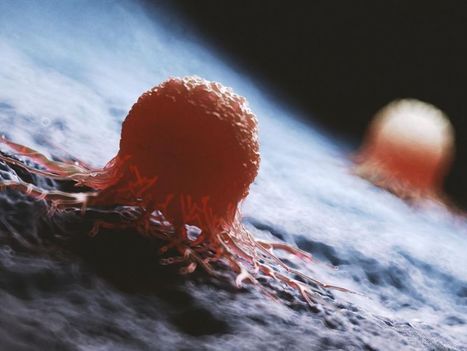


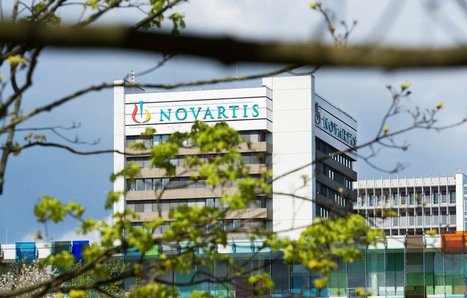
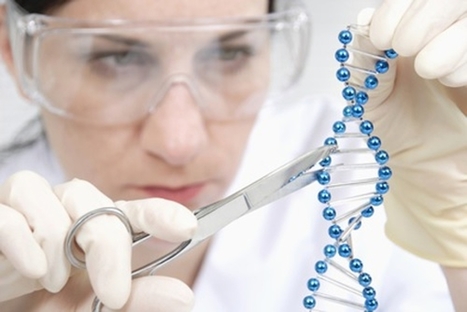

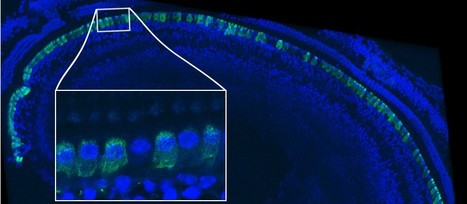


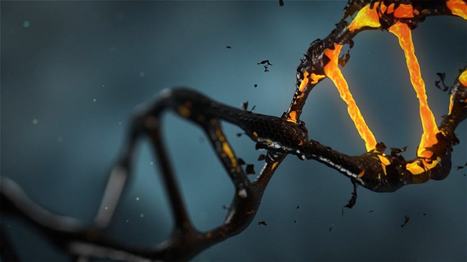


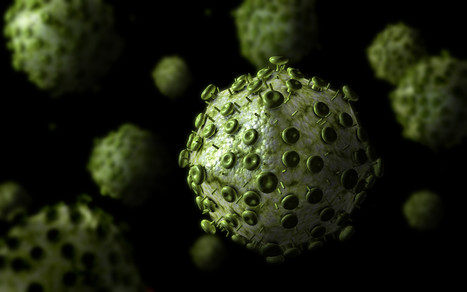
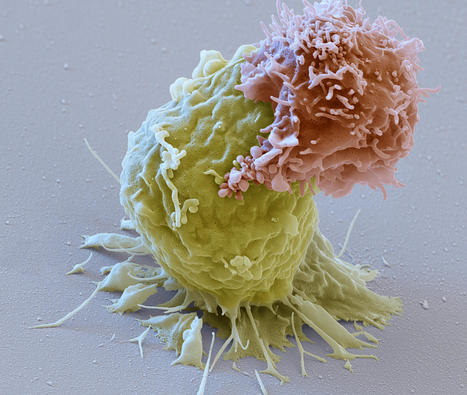
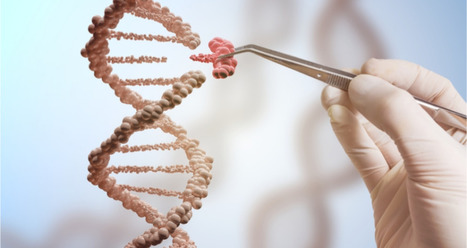





Gene therapy using adeno-associated viral (AAV) vectors can be used for monogenic blinding diseases. Leber hereditary optic neuropathy (LHON) is caused by mutations in mitochondrial DNA (mtDNA), and a recombinant AAV, rAAV2/2-ND4, has shown therapeutic effects in a mouse model of LHON. Yu-Wai-Man et al. carried out a phase 3 clinical trial in 37 subjects with LHON bearing a MT-ND4 mutation. Although only one eye in each subject was treated, the authors reported sustained vision improvement in both eyes. Investigative analysis in nonhuman primates showed evidence of viral vector DNA transfer from the injected to the contralateral eye.